The 4Cs of the Diamond Quality Scale
June 25th, 2019 / Lindsay Kazan
Just like the woman who wears it, every diamond is unique and therefore finding the perfect fitting piece of simulated diamond jewelry requires the utmost care. Although the time and financial investment needed to find the perfect diamond can be overwhelming at the start, understanding key qualities about different diamond options will make the search much more manageable. Armed with the right information and diamond buying advice, you’ll be able to properly evaluate the quality and cost of a diamond with confidence that you’ll find the best stone to satisfy your goals of beauty and value.
Every diamond – whether natural or simulated lab created diamonds – undergoes a thorough, independent evaluation by a skilled grader specifically trained in the diamond quality scale for each of the four distinct characteristics of diamonds. These characteristics are known as the 4Cs of diamonds: carat, cut, color and clarity. The widely accepted ranking system for each of these characteristics was developed by the Gemological Institute of America (GIA). Based on the grader’s assessment of a diamond, the GIA will produce a diamond quality chart and price for the stone to provide to the purchaser as certification of its value. Here is what you need to know about each of the 4Cs of the diamond grading scale.

The carat of a diamond is perhaps the most commonly discussed yet misunderstood characteristic. While it’s often referred to as the size of a stone, carat is actually a measurement of weight. Even so, carat does have a direct impact on the apparent visual size of a diamond, in conjunction with a stone’s cut grade and shape. Specifically, smaller carat diamonds with oblong shapes such as emerald, oval or pear often appear larger than a diamond of the same carat that is round. This is why even though carat is the standard unit of appraisal, a millimeter measurement indicating the diamond’s true physical size is also listed on the GIA certificate.
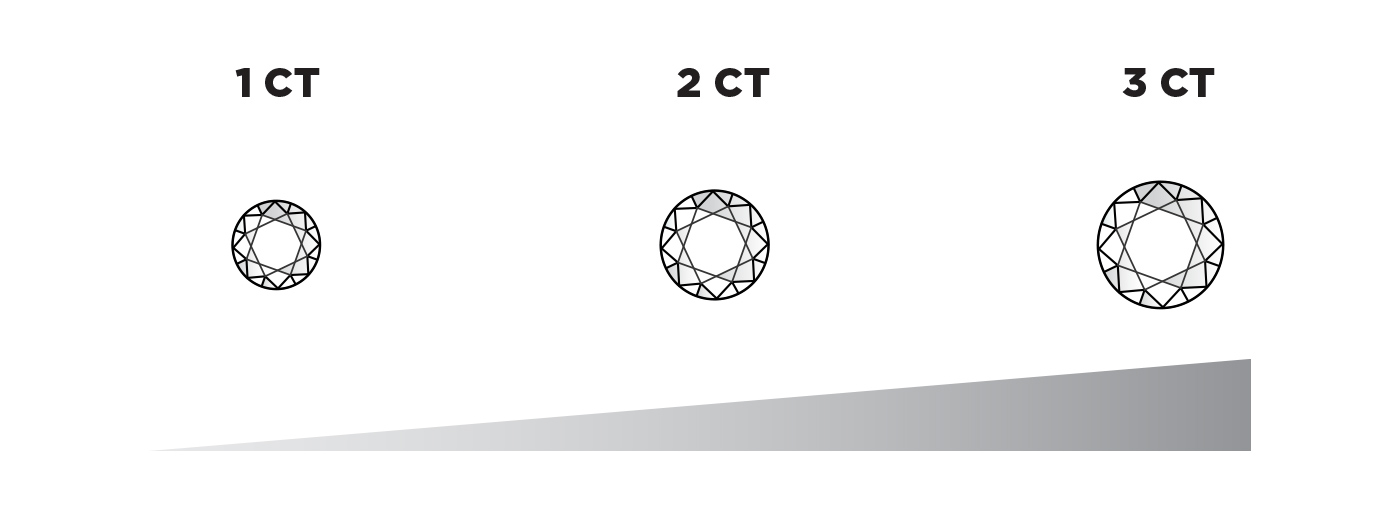
Carat is one of the characteristics that most heavily influences the price of a diamond, whether natural or lab-grown diamond alternatives. Generally speaking with natural diamonds, the price will rise exponentially as its carat increases, meaning, for example, that a 1-carat diamond will cost more than two 0.5-carat diamonds of the same quality. In fact, a larger diamond will typically be priced four times higher than another diamond half its weight. It is tempting for many consumers to sacrifice other elements of quality in an effort to purchase a higher carat diamond. However, a larger diamond may actually make flaws in cut, clarity, and color more visible to the naked eye.
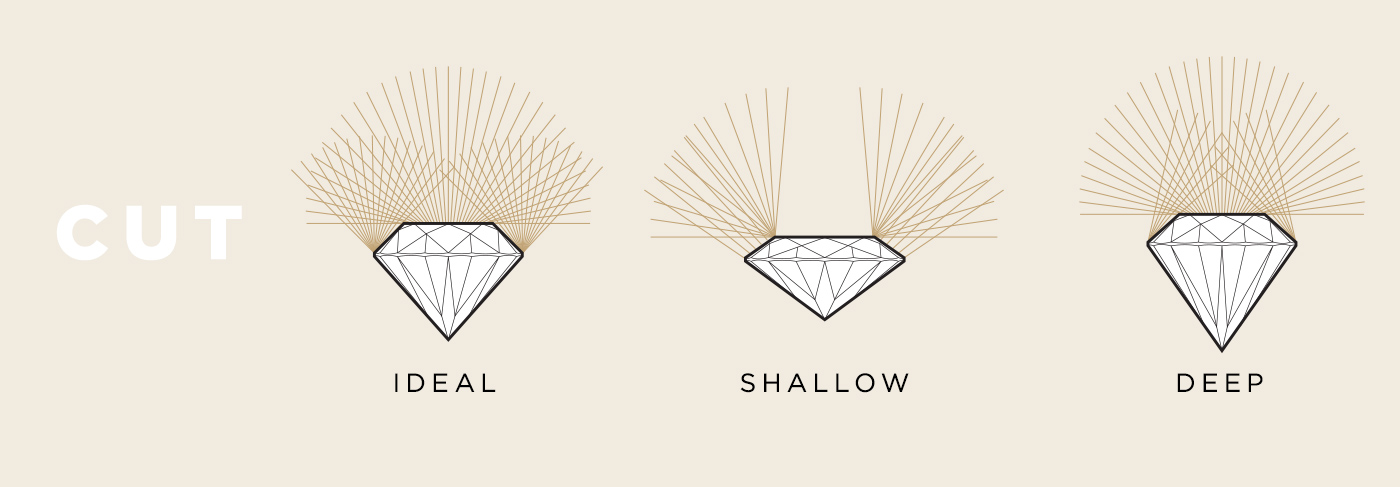
A diamond’s cut grade is revered as the most important characteristic to consider when purchasing a diamond as it’s the most influential factor in creating its sparkle and fire. If the cut grade is poor, even the highest quality diamond will appear dull, lifeless and possibly smaller than it actually is. Of all the 4Cs, cut is the most complex and difficult to analyze. The GIA and its graders use a precise calculation to determine a stone’s cut grade, taking into account the design and craftsmanship of how diamonds are cut. This includes the weight relative to the diameter, girdle thickness, symmetry of the facet arrangement, and quality of the polish on those facets.

Specifically, the GIA’s diamond cut scale is designed for the evaluation of standard round diamonds, the most common shape, with color grades ranging from D to Z and contains six distinct cut grades:
- Ideal. A diamond measured at this grade will emit the most light dispersion and brilliance, due to the exceptional level of craftsmanship. It will reflect white light both internally and externally, scattering it into all the colors of the rainbow and resulting in a wonderful sparkle. This also results in the highest value and prices.
- Excellent. A diamond of this grade has an even pattern of dark and bright areas in its face-up appearance caused by reflections within the stone, known as scintillation. Stones that are measured Excellent will also have higher prices.
- Very Good. Though still ranking quite high in terms of scintillation and brightness, a diamond of this cut grade will have proportions that increase the darkness seen in its face-up appearance or result in a splintered pattern of facets.
- Good. Incorrect proportioning of a diamond’s angles often results in minor scintillation issues for a diamond of this cut grade. This could display as a lack of contrast in its face-up pattern or localized darkness, ultimately making the stone appear less vibrant.
- Fair. Similar in nature to the previous cut grade, a fair diamond will have general darkness to its appearance and a lack of contrast among its facets resulting in a dull shine.
- Poor. Often the result of a thick girdle, a diamond with a poor cut grade will appear dark and lifeless. These diamonds also frequently have a diameter that is smaller than its carat weight, which indicates the angles of the cut are too steep.
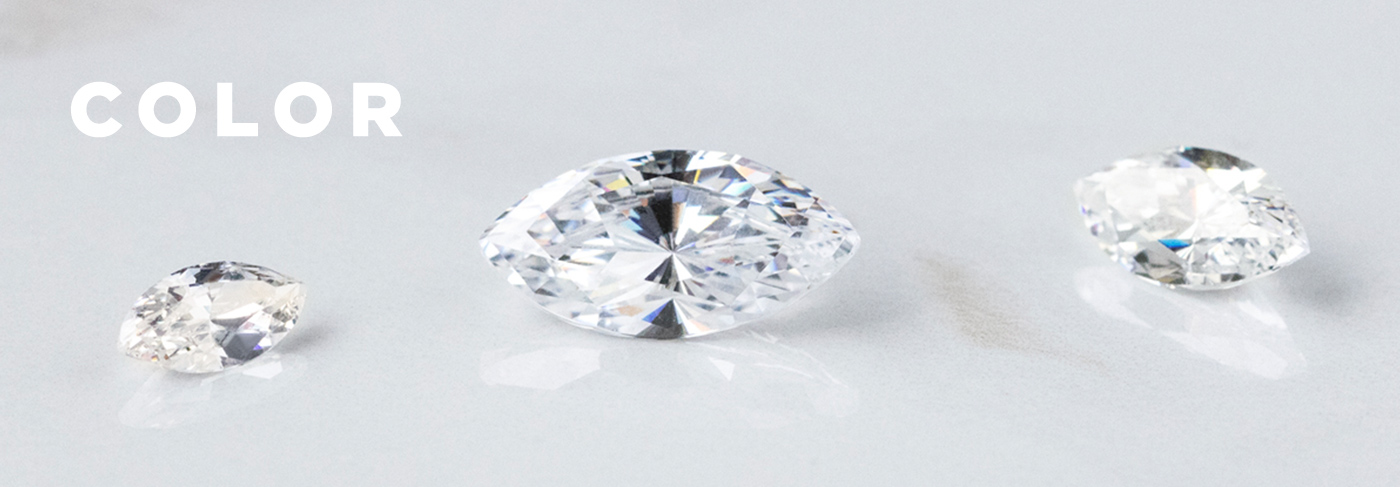
The second most important of the 4Cs, color can dramatically impact the value of a diamond. In reality, the color grade of a diamond is the determination of the presence or lack of color within the stone. Chemically pure diamonds will appear to have a complete lack of color and are valued much higher as they are incredibly rare to find. The GIA color grade is evaluated in a single stone when a skilled grader measures it in comparison to masterstones, a set of diamonds with previously established color grades.

The scale begins with the grade D representing a perfectly colorless diamond and continues to grade Z, with each letter of the scale constituting an increasing presence of color or hue. The color grade scale is also represented by five groupings of the various grades to delineate those that are fairly similar in appearance and value:
- Colorless: Grades D, E and F. The difference among these three grades are likely to be detected only by an experienced grader. Grade D is the rarest for a diamond to receive while grades E and F indicate nearly undetectable traces of color.
- Near Colorless: Grades G, H, I and J. These stones have a slightly warm or yellow tone that is most likely unnoticed by consumers unless side by side with a diamond of a higher grade. Most diamond stores and dealers do not carry diamonds with grades poorer than those in the Near Colorless grouping.
- Faint: Grades K, L and M. Diamonds in this group will begin to display a noticeable tint of color.
- Very Light: Grades N, O, P, Q and R. These diamond have a distinct hue that can range from yellow to brown.
- Light: Grades S, T, U, V, W, X, Y and Z. With an obvious hue, some of these stones, particularly those graded U and beyond, may be more favorable than those graded as Very Light because the more intense coloring can appear akin to a colored diamond.
The differences between a grade D diamond and a grade Z are significant and visibly apparent to the average person when compared side by side. However, the official grading of a diamond’s color must be done under specific lighting and viewing conditions by a trained professional.
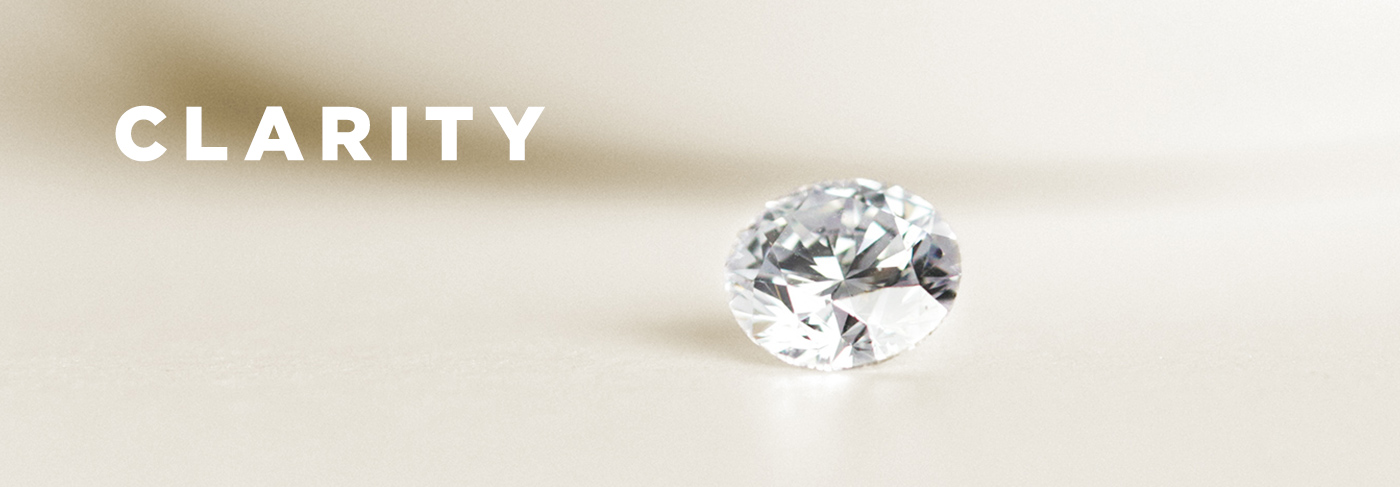
A diamond’s clarity is generally considered the least important of the 4Cs to consider when making a diamond purchase, although it’s helpful to understand how it’s graded and how it may affect the visual appearance of a stone.
Diamond clarity is defined as the assessment of any imperfections on the surface or within a stone. The clarity grade is determined by the number, size, position, relief, and nature of blemishes on the surface of a stone and internally, which are known as inclusions. The GIA clarity scale consists of eleven unique grades divided into six categories:
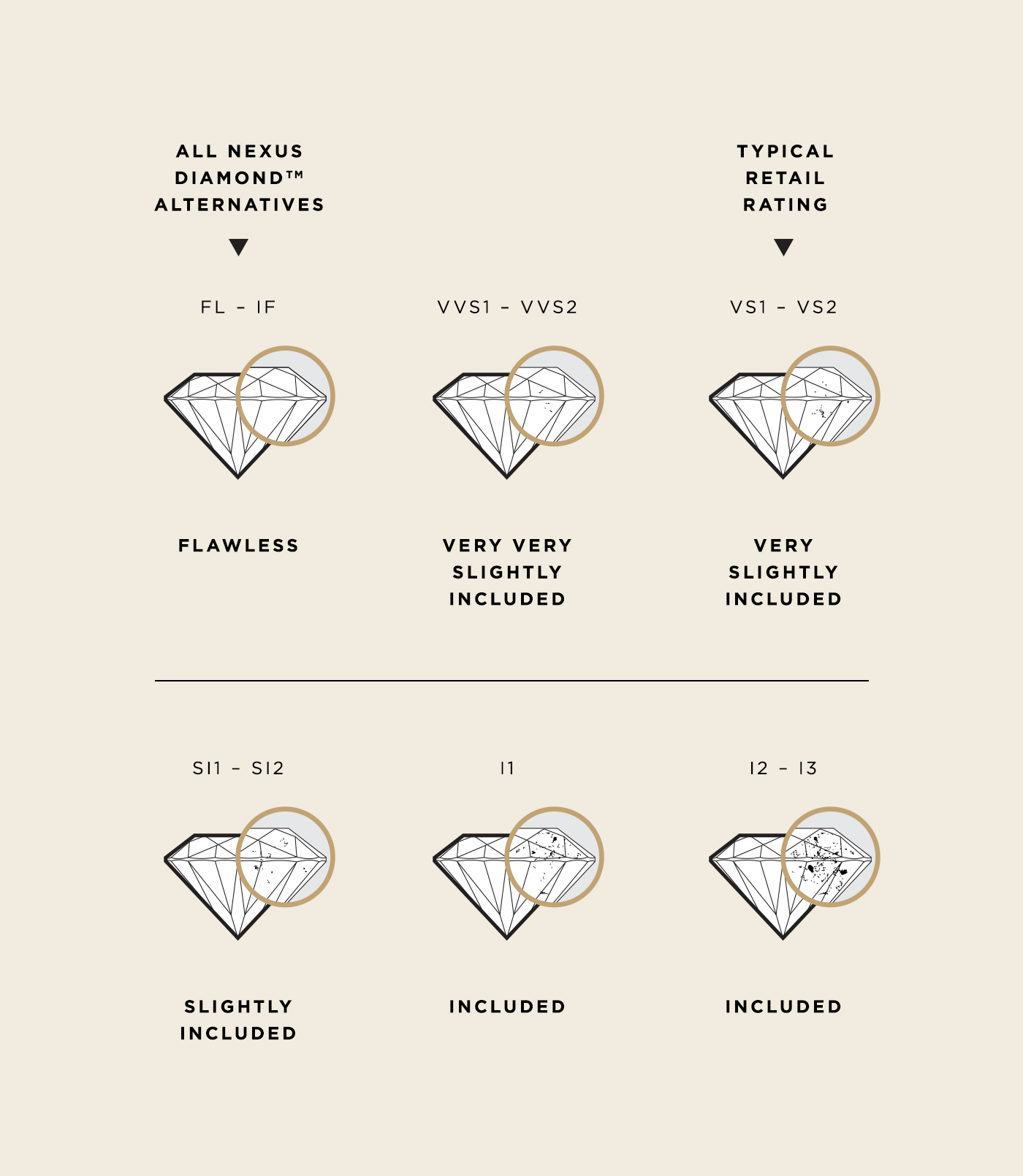
- Flawless (FL): Grade FL. Accounting for less than 1% of all diamonds, clarity of this grade will have no visible inclusions or blemishes under 10x magnification.
- Internally Flawless (IF): Grade IF. These diamonds will have no visible inclusions under 10x magnification, though small blemishes may be identified by a skilled grader.
- Very Very Slightly Included (VVS): Grades VVS1 and VVS2. Stones of this grade will have a few inclusions that are difficult for even a skilled grader to see under 10x magnification. A VVS2 diamond will have slightly more inclusions than a VVS1.
- Very Slightly Included (VS): Grades VS1 and VS2. At this grade, a stone will have minor inclusions ranging from difficult to relatively easy for a skilled grader to spot under 10x magnification. The two grades are distinguished by the number and visibility of those inclusions.
- Slightly Included (SI): Grades SI1 and SI2. These diamonds have inclusions that are easily identified by a skilled grader under 10x magnification and may be detectable to the naked eye.
- Included (I): Grades I1, I2 and I3. These grades will have inclusions that are identifiable by a skilled grader without the use of magnification and may even impact the transparency and brilliance of the diamond.
The 4Cs and Price
Not only do the 4Cs of diamonds help to classify the quality of the stone, but they also impact the value, particularly when it comes to natural diamonds. The GIA and diamond sellers use the grading scales to ultimately set a price for each unique stone. Many mistakenly believe that purchasing a stone with equally high grades on all four qualities is the way to get the best value. However, there are certain trade-offs you can consider based on what’s important to you when purchasing a diamond aligned with your style and budget. For example, a VS clarity diamond with an Ideal Cut would leave you with more budget to spend on higher color grades and carat. In this case, you may consider a Near Colorless 3-carat round diamond. If you’ve ever wondered, what is a solitaire diamond, or the difference between other shapes, this is significant as well since the shape can be a factor in these considerations too.
Another excellent option to consider when assessing diamond qualities is a diamond alternative, such as the Nexus Diamond™. The technological advances of lab diamonds present the opportunity to craft stones with specific qualities. Nexus Diamond alternatives are created with a patented chemical composition made to ensure an Ideal cut, D color and IF clarity for all stones. These diamond alternatives have been created to simulate the look, feel and wear of a perfect mined diamond so you don’t have to compromise on certain qualities to find a stone that fits your budget.
The importance of understanding these evaluations of diamond quality lies in your ability to use them to find the diamond that is your best match. When starting your search for diamond jewelry, keep the 4Cs of diamonds in mind and you will be well on your way to finding the diamond or diamond alternative of your dreams!
*Diamond Nexus strives to provide valuable information, while being clear and honest about our products. The Nexus Diamond™ alternative is a patented lab created diamond simulant that, among all simulants, most closely imitates the look, weight and wear of a diamond, with two exceptions – it is absolutely perfect in every way, and it costs significantly less. Price points and environmental facts expressed in this blog were taken from popular online retailers and may vary. Learn more about the environmental impact of mining by visiting our blog.

